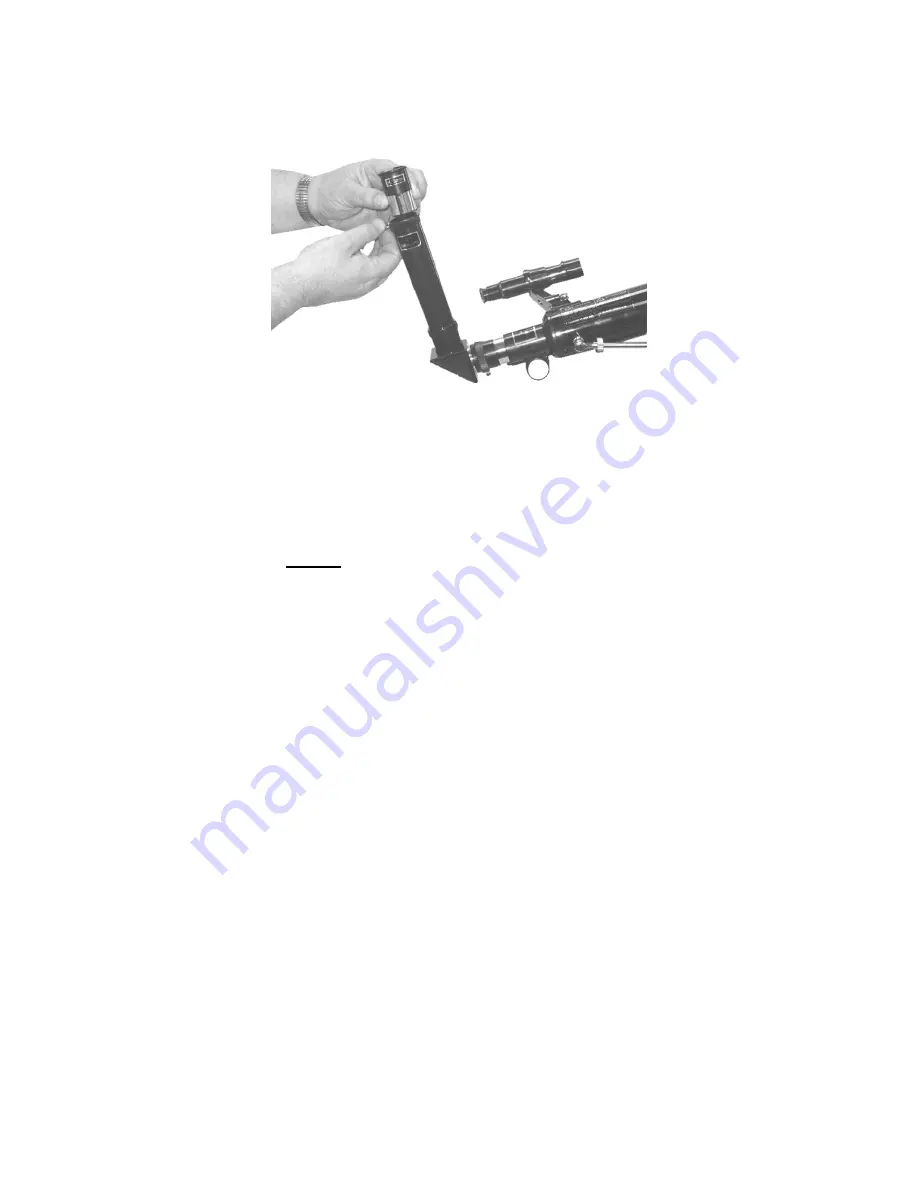
8
11) A 3X Barlow lens is supplied to triple the basic magnifying power provided by an
eyepiece. In viewing situations where very high magnifying powers are desired, insert
the 3X Barlow lens between the eyepiece and the focusing tube (See Fig. 15).
(Fig. 15)
FINDER SCOPE ALIGNMENT
Since a telescope has a narrow field of view by design, it can be challenging to locate a
particular star or planet. For this reason the telescope is fitted with a low-power, wide-
field miniature telescope called a finder scope. Always use your finder scope to locate
the object you want to view FIRST.
The finder scope should be aligned with the
main telescope tube
before you begin using the telescope,
in order that both
scopes are positioned to always provide exactly the same angle and view.
Note: Objects in the finder scope are upside down. This is normal and is common to all
astronomical telescopes.
Complete the following settings in daylight:
1) Insert the 25-mm eyepiece into the diagonal mirror. Look at an easily recognizable,
stationary object that is at least 300 feet away. Slightly loosen the two altitude control
locking knobs, the azimuth locking knob (See Fig. 2 on page 4), and the vertical fine
adjustment rod. Turn the telescope on both its horizontal and vertical axis until the
object is in the center of the field of view. Then bring the image into focus.
2) Firmly retighten the adjusting knobs and the vertical fine adjustment rod so that the
telescope is locked in position.
3) Look through the finder scope. If the object is not visible or centered in the finder
scope, simply release one of the three small adjusting screws holding the finder scope
and reposition the finder scope until the object is centered within the X-shaped
crosshairs.
4) All screws should be completely tightened as soon as the view through the finder
scope coincides with the view of the main telescope.
5) You may need to repeat this procedure to ensure a perfect alignment.































